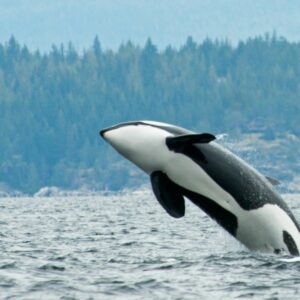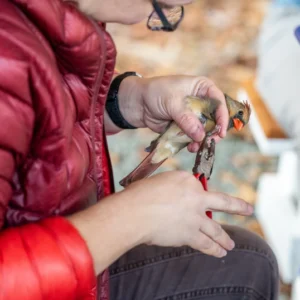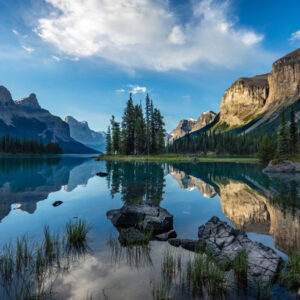Pure Water: Clear Reflections of a Community
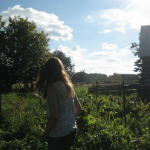
Blair Scott,
Professional Writing Intern
Beautifully Remote: A place where the land guides
The North French River stretches 200 kilometres from Cochrane, Ontario up north into Moose River (just south of Moose Factory). The quality of this river is invaluable: it offers clean drinking water praised by the Moose Cree who have lived there for centuries. However, the North French River has been the subject of natural resource debate as the prospect of industrial activities, like logging and mining, threatens the purity of its waters.
The secluded island known as Moose Factory is situated three miles south of the mouth of James Bay – just across the river from the town of Moosonee. The closest metropolitan region is Timmins, Ontario – roughly a one hour flight.
Moose Factory and its surrounding landscape exude a rugged spirit fueled by tales of exploration and First Nation tradition. In 1673, British settlers had arrived on its shores, soon establishing a venture point for their Hudson’s Bay Company fur trade, in what they then called “Moose Fort.”
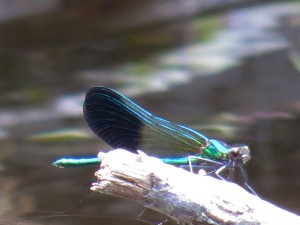
A River Jewelwing
To this day, Moose Factory is largely comprised of the Moose Cree First Nations community, with over half of its population living on stationed reserves – historical residences of Treaty #9, which their ancestors had signed in 1905. Economically, it is sustained by the public service sector, as well as seasonal tourism enterprises and construction; however, private companies are also making their way in.
While traditional Aboriginal practices such as hunting and fishing have been kept alive, many Moose Cree do not solely survive off the land anymore. Even so, careful land stewardship still governs their way of life, while the economic benefits of unfettered development are generally viewed as threatening.
Untouched Intuition: Protecting the North French River
Over the years, Moose Cree has actively tried to protect the North French River watershed from industrialization. They have succeeded in fending off industrial forestry and mining through cooperation with some large companies.
Genetically-rare species of sturgeon swim in these waters, and the area is also home to the threatened Boreal Caribou – a Canadian symbol, and one that thrives off land minimally touched by human impact. Keeping the North French River clean is integral to the health and abundance of the ecosystem it supports.
In addition, protecting this river can help Ontario accomplish its environmental goals, as the North French contains important carbon stores. Ontario’s commitments under the Far North Act and Endangered Species Act will also benefit from North French River protection.
While the Moose Cree have passionately defended the natural bounty of the North French, Ontario has failed to adequately factor their long-term concerns into its provincial laws. The doors are still open for industrial activity, inviting land-use conflict amongst local residents and invading economic interests.
What Does Nature Canada Think About It?
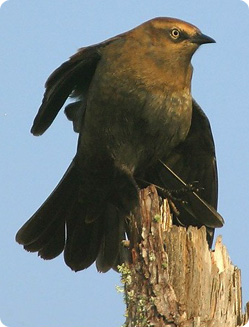
A Rusty Blackbird
Nature Canada supports Moose Cree in their efforts to protect the North French River. For the past three years – with grants provided by the Federal Government’s Habitat Stewardship Program – we have partnered with them to evaluate the state of at-risk bird species in the Moose Cree First Nation (MCFN) region.
Ted Cheskey, Senior Conservation Manager at Nature Canada, went on a twelve -day expedition with Moose Cree colleagues including Bernie McLeod – Bird Conservation Coordinator for Moose Cree First Nation Lands and Resources Department – to document the biodiversity and prominent nature features around the North French River, as well as any signs of human activity in the region. Ted’s focus was on documenting bird species and the coinciding natural history that went with them.
They were dropped by float plane onto Sand Lake – about twenty minutes north of Cochrane, Ontario – and from there, embarked on an adventure of camping, canoeing and portaging through rapids and waterfalls, while observing regional species at risk. They found relatively strong populations of the federally-threatened Common Nighthawk around granite drops along the river, and in a site that had been subjected to a forest fire a decade ago. They noted the thriving insect population in the region as a factor supporting these birds.
Other notable sightings include large numbers of the damselfly, River Jewelwing – the presence of which indicates good stream and river water quality, and the Rusty Blackbird – a species that thrives off the abundant spruce habitat and water life afforded by the North French. Ultimately, what this team discovered was that these species were intricately connected to the stories of the landscape, and that thriving wildlife populations were indicators of thriving land features.
Complementing these rare sightings is the fact that few signs of human activity were spotted – the North French region was described as “pure, boreal wilderness.” Check out Ted’s blog for a full account of this wild river journey – here you can find an extensive list of observed bird species, including various types of warblers and flycatchers!
Nature Canada is raising our voice to have this area, as well as 6 others, listed as a protected area and you can help!
[button link=”http://e-activist.com/ea-campaign/action.retrievestaticpage.do?ea_static_page_id=4826″ size=”medium” target=”_self” color=”green” lightbox=”false”]Take Action and Save Wilderness Now[/button]

